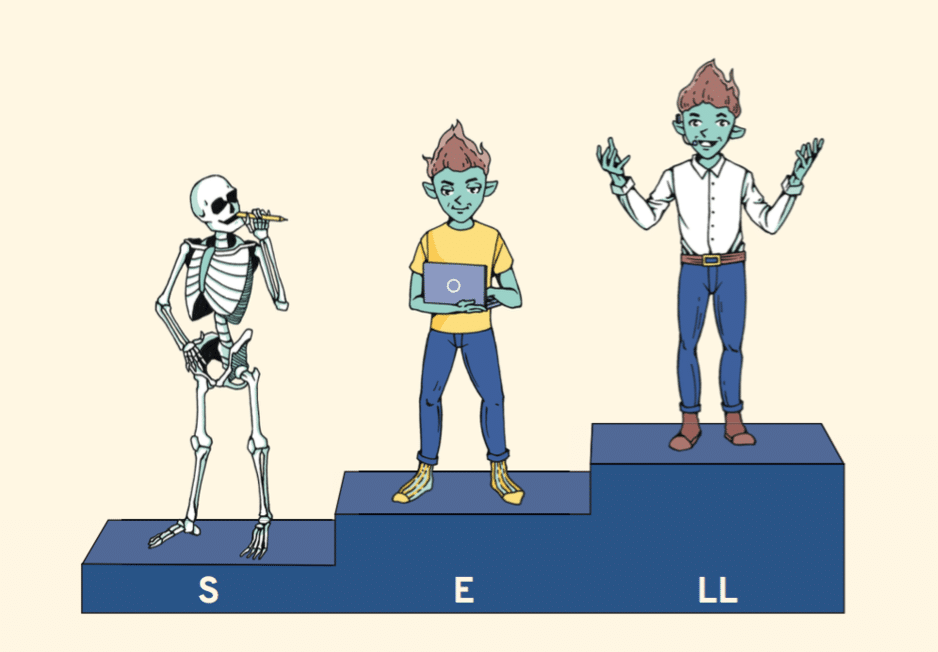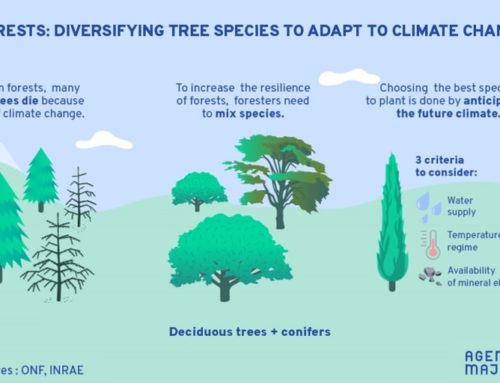Narrative CVs:
how to write them
In an effort to promote a more equitable and reliable evaluation of diverse scientific profiles, more and more research organizations are currently testing narrative CVs. While it is never easy to submit applications, this new format is a great opportunity to showcase your unique professional path, scientific work and personal motivations. Where do these resumés come from? Why are they interesting? And most of all, how do you write one? Hang in there, this article will walk you through the basics.

A narrative CV in a nutshell
A narrative CV is a structured written account in which researchers can showcase their relevant achievements, professional experiences and skills. This story format gives a better view of a person’s broad range of contributions in context. Today, major research organizations are introducing the use of narrative CVs to reduce bias, find more diverse profiles, and in turn drive innovation.
A story which began in 2012
In December 2012, journal editors and publishers met at the Annual Meeting of the American Society for Cell Biology. Their agenda: to curb the use of journal-based metrics in funding and hiring applications and find better ways to assess research. Thus was born the San Francisco Declaration on Research Assessment (DORA). This list of recommendations began to disrupt the way research output was evaluated by funding agencies and academic institutions. To date, 2853 organizations in 160 countries have signed DORA. A decade after, a new CV format is under way to improve practices in research assessment.
In this area, UK Research and Innovation (UKRI) has set a precedent. In 2021, the main public funding agency in the United-Kingdom established its Résumé for Research and Innovation. This narrative CV is based on the Royal Society’s Résumé for Researchers (R4R) originally developed in collaboration with DORA. The model is now widely adopted by both national and international partners committed “to exploring a shared approach towards a narrative CV” for applications.
A momentum for new research evaluations
“Our main job as a funder is to make sure the best science gets funded, and how these decisions are made is critical” states Sean Sapcariu, Programme Manager at the Luxembourg National Research Fund (FNR). Likewise, the FNR is a leading advocate for the use of narrative CVs and implemented this format in all its funding programmes in 2021.
Many more organizations across Europe are currently trying out narrative CV models (e.g. NWO – Netherlands organization for scientific research, DFG – German research foundation, ERC – European research council, FNSNF – Swiss National Science Foundation) and others are sure to follow. Change is definitely under way – and for the better.
An opportunity to show yourself in a new light
“When we talk to researchers and ask about their recent achievements, it shouldn’t be that they published two articles in Nature, but rather the nice science they have done and their contributions to the community and broader public” states Marc Schiltz, the Secretary General of the FNR. The worth of scientists cannot be judged solely through bullet lists detailing their publication record. Narrative CVs focus on quality over quantity and limit the use of journal-based metrics. They may even omit publication lists altogether.
What do narrative CVs focus on instead? Simply put, the value of scientific contributions and activities both in the research world and in society. Narrative resumés allow applicants to be more fairly evaluated by making way for a more holistic view of the research profession. “I am glad to see that this new evaluation system takes into consideration a wider range of competencies. For example, it was rather difficult for researchers to highlight public engagement activities until now” said Alexia Youknovsky, our CEO, in her interview for Times Higher Education.
A broader recognition of scientific profiles
In a feedback survey from Alzheimer’s research UK, 87% of respondents thought the narrative CV gave them a better opportunity to showcase broader skills and experience. Indeed, narrative CVs recognize and reward many worthy aspects of research which may otherwise be overlooked: teaching and mentoring, project management, peer review, open science contributions, international or interdisciplinary collaborations, dissemination activities, industrial partnerships, organization of scientific events, etc.
Moreover, unlike conventional application formats, narrative CVs foster diversity and promote gender equality in research and funding processes. They offer a more flexible and humane framework in which there is room for different professional and life trajectories. Personal statements make it possible to explain career changes or breaks away from research for a number of legitimate reasons (e.g. positions in industry, volunteering, family responsibilities, sick leave).
A structured and descriptive format to show your unique value
Most funding applications follow the R4R-like structure developed by UKRI for their narrative CVs, or a variant of the template. Applicants are asked to summarise their contributions in 4 sections/modules:
- Generation of new knowledge, ideas, tools, methodologies
- Development of other individuals and research teams
- Involvement in the wider research and innovation community
- Impact beyond the scientific community for broader society
Researchers have up to 500 words in each category, sometimes less.
In addition, in their personal statement, applicants can highlight their research interests, motivations, and short- and long-term goals. “Unlike traditional CVs, this module allows researchers to show ‘who they are’ in addition to ‘what they did’,” explains Alexia Youknovsky. Scientists can show their personality by explaining why they pursued a carrier in research and what drives them.
This exercise is a great opportunity to showcase a personal brand, namely your unique story, skills and goals. Admittedly, this is not an easy task and it might sound tricky, but here is our advice!
A tailor-made narrative CV
To begin with, we recommend tailoring the content of the narrative CV to your needs. Each application will be different, depending on the expectations of the funding organization and the stage in your career. Defining your central message will be key to link all the different accomplishments together. It will help your readers to better understand and remember your profile.
You do not need to have outstanding accomplishments in all four areas, highlight your strengths, evaluators assess the application as a whole. Moreover, do not ‘cram’ as much information as possible in the CV. For each module, focus on one or two striking examples to show your greatest achievements and results. Likewise, the examples listed in templates are non-exhaustive, you can include other relevant experiences in your application. However, do make sure that you provide enough information and evidence to support your statements.
A new way of sharing your story
It can be hard to identify and highlight invisible skills or daily tasks, yet these matter. Furthermore, researchers are used to an impersonal type of writing and you may find it awkward to promote yourself. To overcome these issues and to clarify your ideas, you can have a conversation with a friend or colleague. Alexia Youknovsky recommends “spontaneously discussing the content of each section and then transcribing these thoughts in writing. Your statements will look more genuine and dynamic that way!”
Storytelling is a great way to stand out, to catch the attention of the reader and to stick in their memory. Stories connect us to people, shape how they see us and build trust. Like stories, the examples in your narrative CV may describe the following elements: setting (i.e. the context), characters (i.e. people involved), conflict (i.e. challenges), and resolution (i.e. solutions and outputs). In addition, “using vocabulary to describe emotions can also help you to create a connection with readers” explains Alexia Youknovsky.
A writing style with good flow and readability
A narrative CV calls for a first-person narrative. But to avoid appearing too self-centred, describe how you fit in your science community and beyond. You can balance your personal achievements by mentioning your team, collaborators and beneficiaries, while making sure your role is clear.
During the writing process, check if the text is easy to read and to understand. Simple answers will be more powerful than complicated statements. Make sure your sentences are no longer than 15 words on average. Alternating short and longer sentences and using punctuation wisely will give rhythm to the text. Most of all, use the active voice as much as you can, as it is the most direct way of presenting information.
Finally, though it may seem trivial, reviewers may look at your LinkedIn profile, so make sure that you have an up-to-date page in line with your narrative CV. And if you want to get off to a good start, why not take our training course “Write a narrative CV”.
Though narrative CVs may require a lot of effort and are easier to draft for people with good English writing skills, the feedback has been largely positive thus far. This new format is understandably gaining momentum. Narrative CVs valorise the diversity of ideas, skills and career paths in research. What makes you unique? These applications are a great opportunity to shed light on all your different contributions. Be proud of your work, show your worth and share your passion!
> Written communication
23/06/2023







